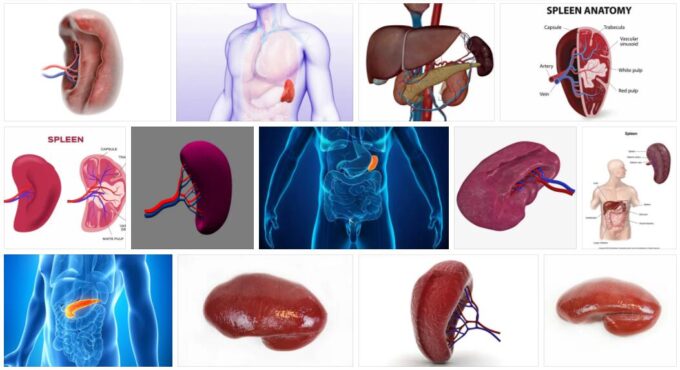The Latin word badius, which can be translated as “reddish”, came to our language as spleen. According to the DigoPaul, the concept may refer to a coppery color with a tendency to yellowish.
The most common use of the notion, however, is in the realm of anatomy. The spleen is a viscus of vertebrate animals whose shape varies, but is usually located near the stomach, on its left side.
The reddish spleen contributes to the development of lymphocytes (lymphatic cells that participate in immune reactions) and to the destruction of expired red blood cells.
In humans, the spleen is oblong and flattened in shape. It is usually eight and a half centimeters wide and about thirteen centimeters long, with a thickness of three and a half centimeters and a weight that exceeds 125 grams but does not reach 200.
This organ is located in the upper left sector of the abdominal cavity and is linked to the left kidney, the diaphragm, and the pancreas. The spleen is usually not palpable in adults.
The functions of the spleen in the human body include the maturation and elimination of red blood cells, and cellular and humoral immunity. When the organ presents some type of damage or pathology and must be removed either totally or partially, a splenectomy is called for. This surgical intervention is usually carried out through the method known as laparoscopy.
Spleen hypertrophy
Also known as splenomegaly, a hypertrophy of the spleen occurs as a consequence of another disorder, and is not considered a disease itself. The number of problems that can cause it is very high, which is why it is necessary to rule out certain conditions before finding the specific cause. It is important to note that when the spleen is enlarged it needs a greater volume of blood and if it does not receive it it can be damaged or even stop working completely.
Since the causes of spleen hypertrophy are so many, it is necessary to divide them into several groups, as can be seen in the following list:
* infections: hepatitis, brucellosis, visceral leishmaniasis, infectious mononucleosis, psittacosis, malaria, syphilis, subacute bacterial endocarditis and tuberculosis;
* Anemias: hereditary spherocytosis, hereditary elliptocytosis, thalassemias, and sickle cell anemia;
* myeloproliferative disorders and hematologic malignancies: leukemia, polycythemia vera, myelofibrosis, and Hodgkin’s lymphoma and other lymphomas;
* Thesaurism: in this group of possible causes of hypertrophy of the spleen are several diseases, such as Gaucher, Letterer-Siwe, Hand-Schüller-Christian, Niemann-Pick and Wolman.
In addition to the causes just mentioned, there are others that cannot be easily classified, and among them we find: cirrhosis, amyloidosis, thrombosis of the portal or splenic vein, cysts in the spleen, Felty’s syndrome, sarcoidosis, systemic lupus erythematosus and pressure over the portal or splenic vein.
With regard to the symptoms of hypertrophy, they are difficult to identify since there are not many and they can resemble those of other disorders. For example, given the proximity between the spleen and the stomach, it may happen that it compresses it and generates the sensation of satiety in the subject despite not having ingested any food. Back pain in the region near the spleen and discomfort in the upper left area of the abdomen are also common.
The treatment of hypertrophy of the spleen usually focuses on the underlying disorder, although there are also specific recommendations for patients, such as avoiding any activity that may cause blows or impacts against the spleen area, since under these conditions it is more prone to tears and bleeding impossible to control.

